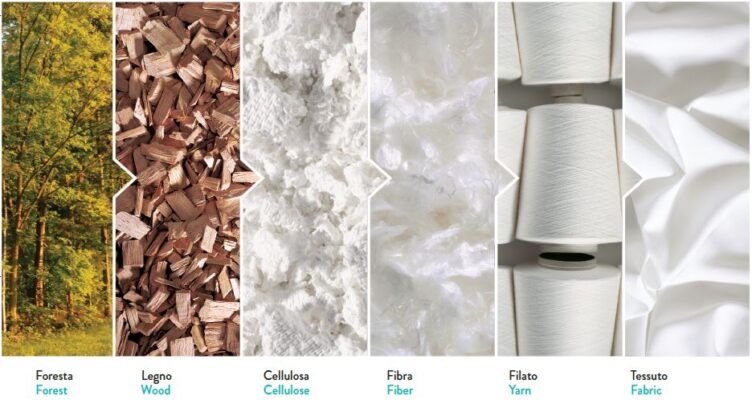Sustainability has taken center stage in the fashion industry and a revolution in textile materials and production is underway. Fashion brands and designers are increasingly turning toward more sustainable alternatives like organic cotton, hemp, bamboo, and lyocell. Materials like these offer numerous environmental advantages like reduced water wastage, lower carbon emissions, and a reduced reliance on harmful chemicals and pesticides used in traditional textile production.
Innovative and eco-friendly production methods like closed-loop systems and low-impact dyeing techniques are also gaining traction, effectively minimizing the waste and pollution we push out into the world to stock shelves in retail stores and fulfill the demand in online stores.
Sustainable textile sourcing and production practices have allowed the fashion industry and its biggest players to take some noteworthy steps to reduce the overall ecological footprint and preserve natural resources for generations to come. But the question, arise is modal sustainable Links to an external site.? The answer lies in this article.
At the heart of it is consumer demand, fueled, in turn, by rising global awareness about the limited resources on our planet and the dire consequences of our actions.
Ethical Fashion and Fair Trade Practices
The green revolution in fashion goes beyond just ecological concerns. It encompasses ethical and social responsibilities as well. Ethical fashion and fair trade practices have become essential cornerstones in the pursuit of sustainability today—And brands that prioritize fair wages and safe working conditions are typically identified as better when consumers interact with branding and marketing.
It's also true that the fashion industry can positively impact entire communities and improve livelihoods by supporting fair trade practices. This can ultimately lead to a more equitable global supply chain.
That being said, a large driving factor behind ethical fashion, fair trade practices, and more sustainable production choices is the need for consumers to celebrate a story.

Consumers today value the story behind their clothing. Ethically produced garments, in this regard, resonate better with those who seek fashion that aligns with their values of social consciousness and empathy.
Circular Fashion and Textile Recycling
In theory, recycling is a concept as old as human civilization. But in practice, and especially in the world of fashion and garment procurement and design, recycling has been a concept rarely prioritized.
That’s all changing gradually.
Circular fashion represents a paradigm shift in the industry, aiming to close the loop on clothing production and consumption. Central to this concept is textile recycling and upcycling, diverting fashion waste from landfills and conserving valuable resources.
Recycling old garments into new fibers and fabrics allows brands to contribute to a more circular economy—Which is fast becoming the need of the hour. Initiatives like clothing rental services and take-back programs for garments are also picking up more interest.
These sustainable consumption patterns are emerging to answer a growing demand for sustainability by consumers and pressure from governments to steer the world in the right direction.
Needless to say, as circular fashion gains momentum, it has the potential to redefine how we view and value clothing, reducing the pressure on natural resources and challenging the prevailing culture of fast fashion.
Consumer Education and Sustainable Fashion Choices
One of the most important elements in driving the adoption of sustainable textiles and practices is to empower consumers with knowledge. This includes educating the public about the environmental and social impacts of our fashion choices. More conscious consumer behavior and demand are the easiest and fastest ways to bring about positive changes in society.
Three main points of education for consumers are:
- Making eco-conscious fashion choices to reduce our negative impact on the planet.
- Embracing second-hand fashion when possible.
- Supporting sustainable brands over those that make no effort to reduce their ecological damage.
Wrapping Up
Looking ahead, the future of sustainable textiles in the fashion industry is promising. And as we as consumers demand greater transparency and sustainability from brands, the fashion industry is compelled to embrace greener practices to address concerns of environmental responsibility.
 icons at the top right corner of the subsection.
icons at the top right corner of the subsection.